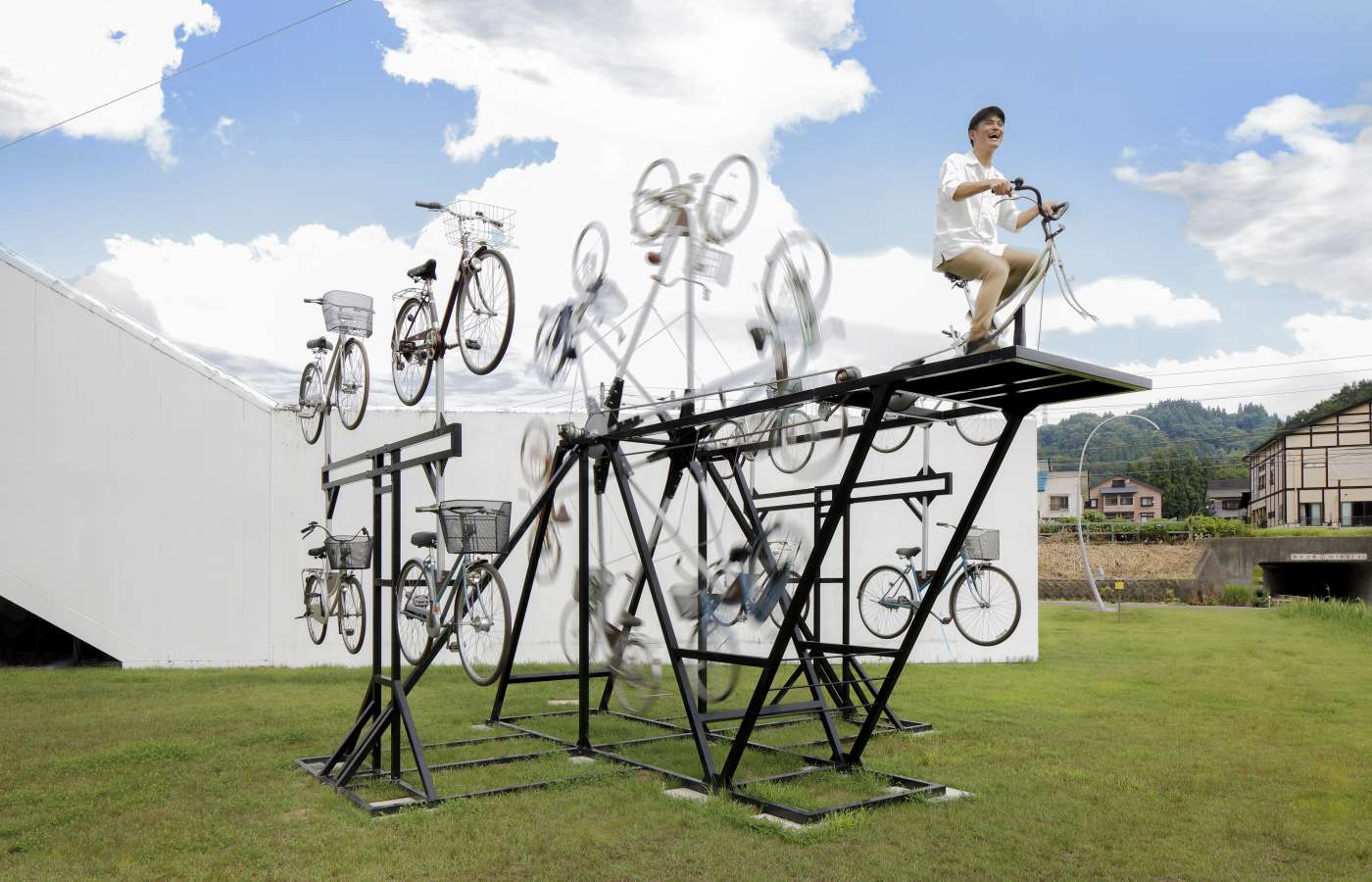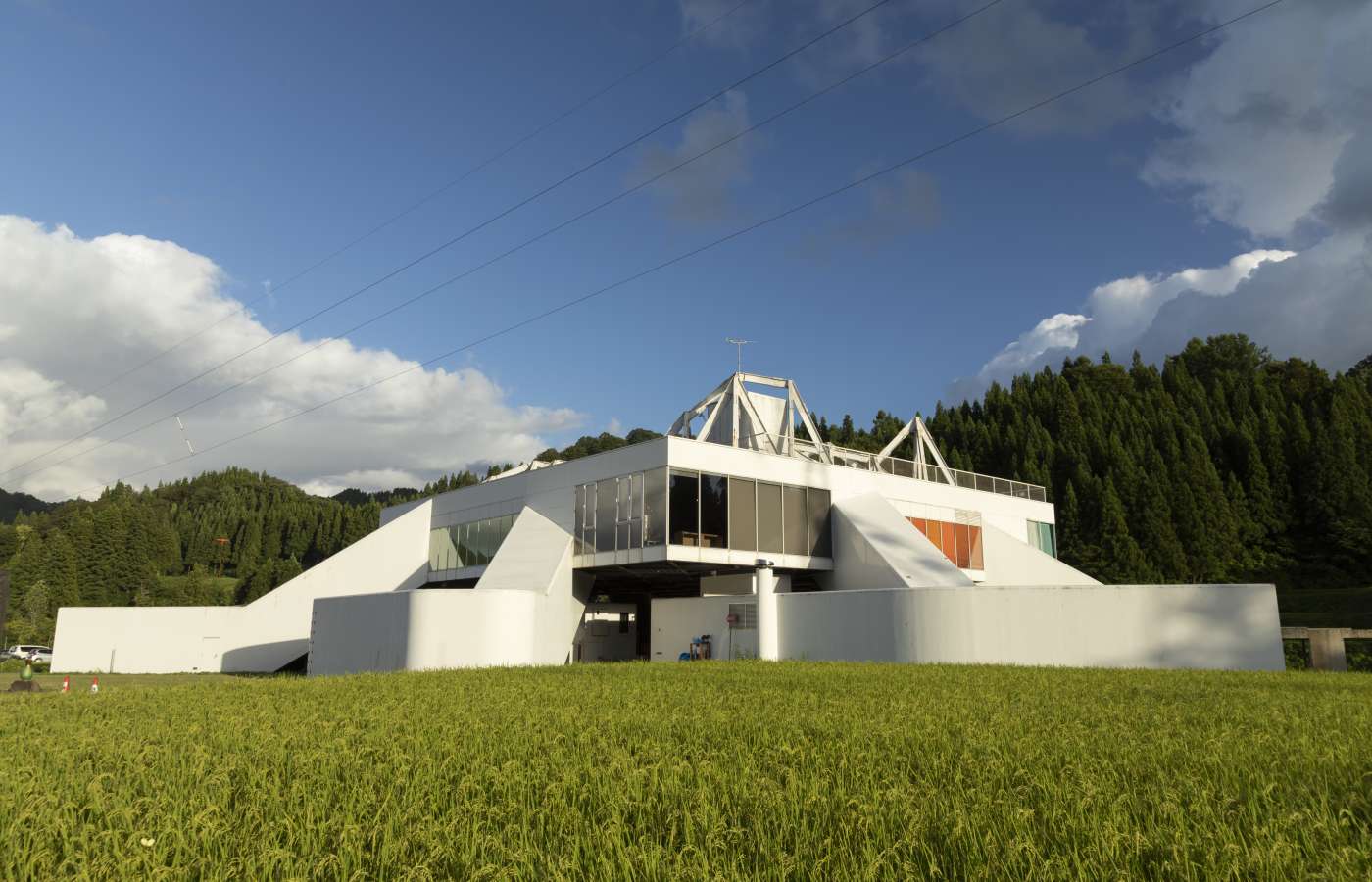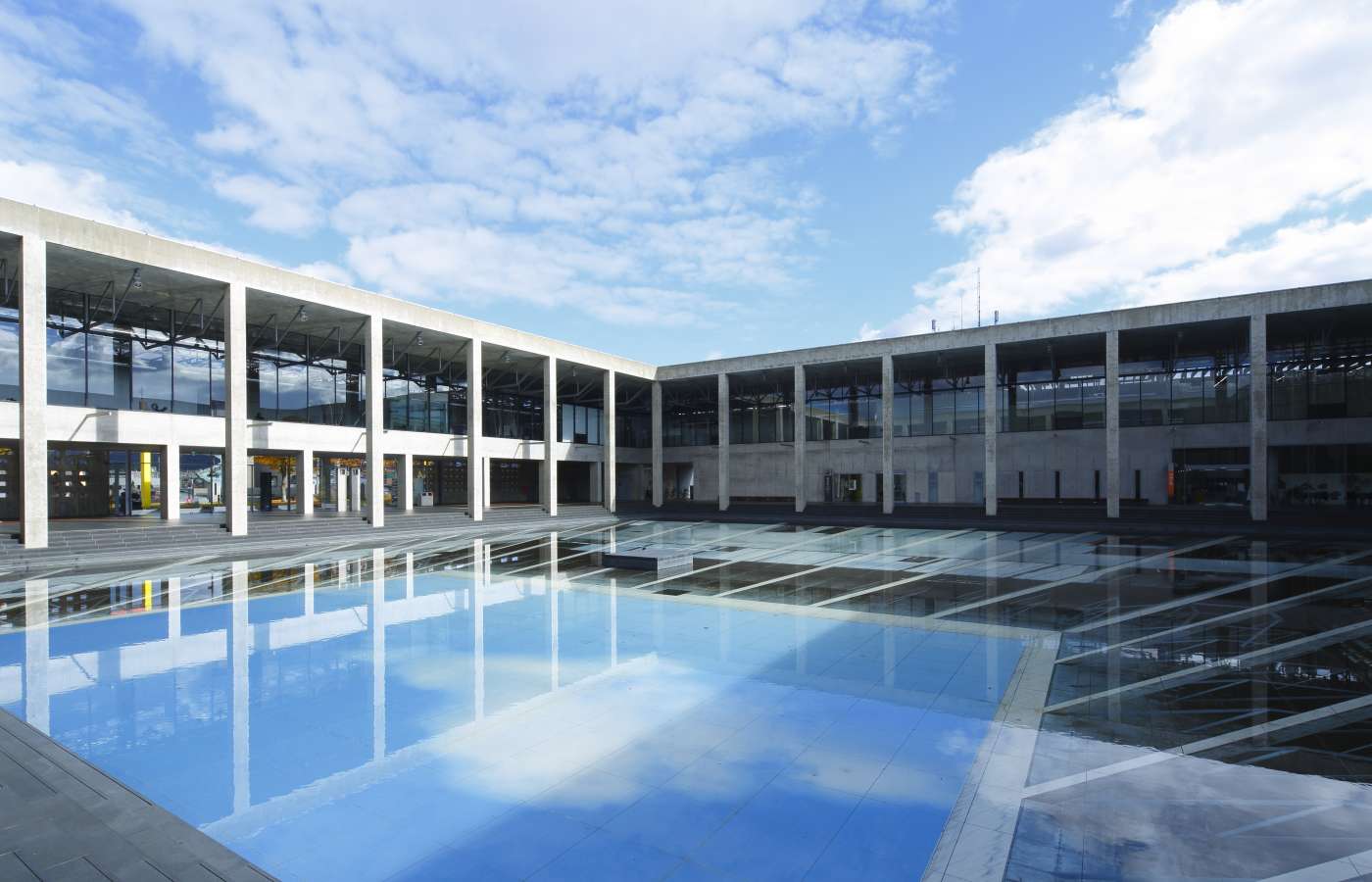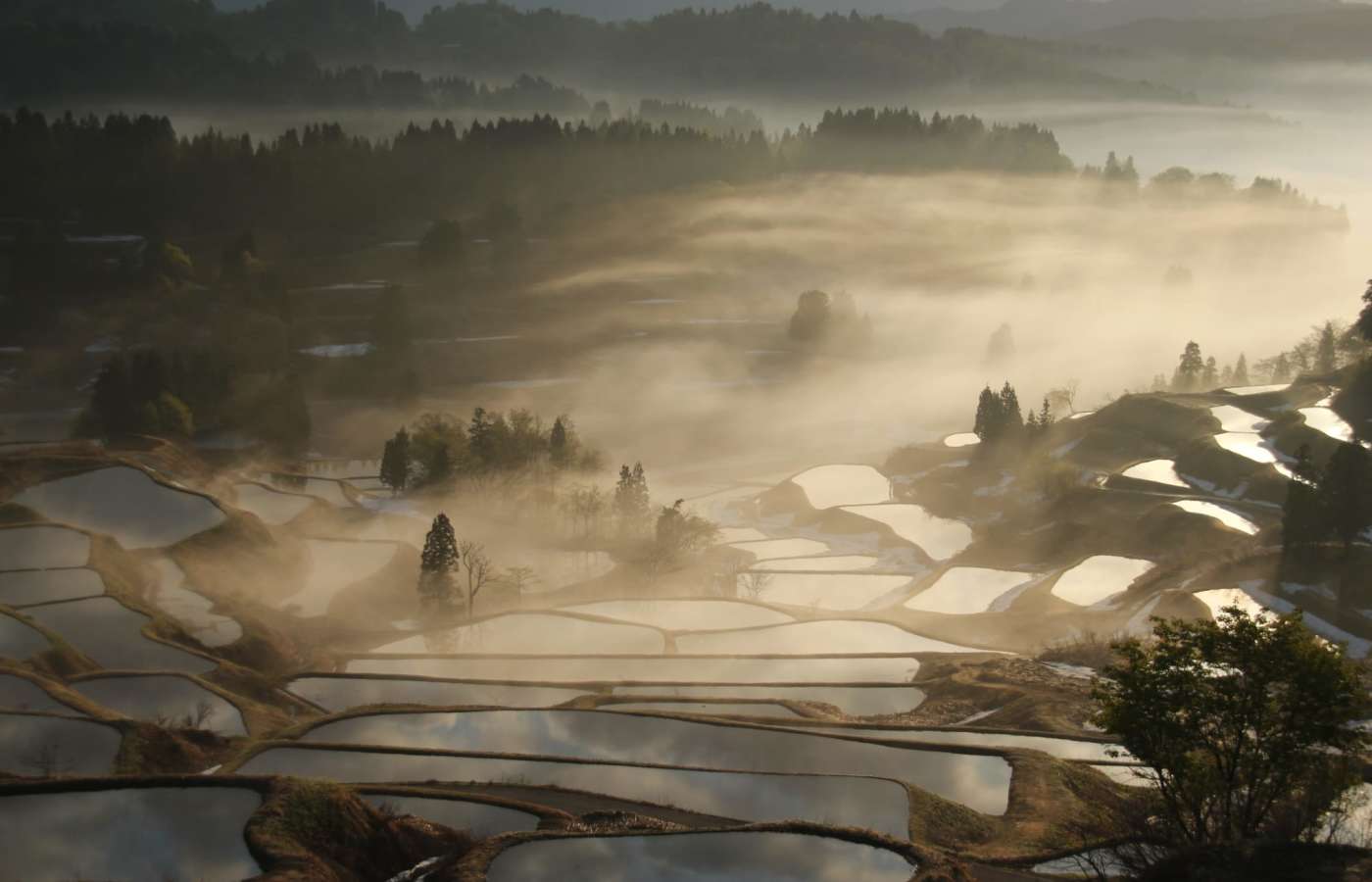
2021.12 Art History Meets the Contemporary Scene in Niigata's Tokamachi Region Step into a fascinating world of art surrounded by scenic beauty
Key Image Ma Yansong/MAD Architects,"Tunnel of Light"(Echigo-Tsumari Art Field)
An art town redefines itself for the present
Deep in Japan’s “Snow Country” lies Tokamachi, a historical city devoted to honoring its ancient pottery culture and one-of-a-kind textile industry. Elements of nature heavily shaped early craftsmanship, with the local pottery being famous for its unusual flame-style ornaments, and one type of kimono fabric using actual snow to gain its bright colors.
The city’s artistic ties remain strong until this day and many new modern art developments show a cultivated sense of community. The Echigo-Tsumari Art Triennale held every three years gives artists from near and far the opportunity to create unusual but meaningful pieces. The creations aren’t restricted to indoor spaces — many are installations placed strategically outdoors to create a dynamic and interactive experience.

Azuma Koichiro, “Rotating Absence”, photo by Kioku Keizo
Japanese historical roots, Jomon era pottery and textiles
Rice is well known as a staple of the Japanese diet, yet artifacts from the Jomon era, Japan’s earliest historical era that began 16,000 years ago, show that agricultural technology was only introduced in the subsequent Yayoi era. Before that, the Jomon people were hunter-gatherers, and they cooked their meals in earthenware pots characterized by the “jomon” (rope pattern) that the period is named for.

Photo credit: Tokamachi City Museum
The Tokamachi City Museum showcases the elaborate flame-style pots that are unique to the Shinano River area. The swirling flame rims, while beautiful, were impractical for everyday cooking, and their true purpose remains unclear, although experts have theories. Were they primarily used in rituals and religious ceremonies? You can see the wild flames that adorn the tops of these pots, and try to uncover the mystery yourself.
Another of the museum’s permanent exhibitions is centered around Echigo-chijimi, also called Echigo-jofu, a light fabric that doesn’t stick to the skin and is used to make high-quality summer kimonos. Viewing the fabric and tools used to make it in the museum, visitors will witness fabric weaving that has been passed down unchanged for more than 1,200 years. In 1986, Tokamachi’s spinning and weaving implements, alongside related documents, were designated as Important Tangible Folk Cultural Assets. Further, in 1955, the fabric made the national Important Cultural Properties listing, and in 2009, it was put on UNESCO’s Intangible Cultural Heritage of Humanity list. The region’s heavy snows contribute to the bright colors of the fabric—it is laid out on snowfields after being woven, where it is bleached naturally.

The process of hand weaving Echigo-chijimi (Echigo-jofu) is long and laborious, but the high-quality result is worth it.
Photo credit: Tokamachi City Museum
Building a community around the Echigo-Tsumari Art Field
Tokamachi’s artistic past and pristine nature have strongly influenced contemporary artists. The importance of art is evident thanks to the Echigo-Tsumari Art Field comprised of permanent and temporary art installations. Exploring the region allows visitors to experience pieces inspired by reviving and strengthening the connections between nature, community and beauty. The installations created for the festival occurring once every three years aren’t confined to a single space—there are over 300 artworks spanning many locations throughout the Echigo-Tsumari region. Even outside the Triennale period, visitors can visit approx. 200 permanent artworks.

Kurakake Junichi + Nihon University College of Art Sculpture Course, “Shedding Time”, photo by Kioku Keizo
Japanese artist Akiko Utsumi was so overwhelmed by the area’s nature that she created the art piece For Lots of Lost Windows, a window frame with curtains opening to a beautiful view of a river, fields and mountains. Another Japanese artist, Tetsuo Sekine, recreated the feeling of enjoying summer in nature through statues of boys in red fundoshi (loincloths).
The installations aren’t limited to Japanese artists either, American James Turrell created the House of Light. The piece draws on contrasts including light and shadow, modern and traditional, and Eastern and Western. Visitors can even spend the night there.

MVRDV, “The Matsudai Snow Country Agricultural Culture Village Center "Agricultural Stage", otherwise known as the Matsudai Nobutai”, photo by Nakamura Osamu
Matsudai Nobutai is also included within the Echigo-Tsumari Art Field. The Matsudai Center itself is built on ‘legs’ that raise the building up off the ground, providing a snow-free zone underneath in winter and a shaded plaza in summer. An agricultural art piece lies behind this building, depicting the toils of farmers in the rice fields. As visitors explore the piece, they can write poetry showing appreciation for the workers floating in the sky above.

Ilya and Emilia Kabakov, “The Rice Fields”, photo by ANZAÏ
The Museum on Echigo-Tsumari (MonET) incorporates the elements of nature into the very building itself. Its central pool is a perfect square that reflects the sky above. The contemporary art museum also employs a traditional building design of nested rooms that separate the noisy exterior to create a peaceful inner space. It’s clear that nature and art will continue to be the backbone of the Echigo-Tsumari community.

Get an up-close experience with Echigo-Tsumari culture
Art is not just a passive activity—you can get involved! There are many different ways to create art, and the Hachi and Seizo Tashima Museum of Picture Book Art offers interactive workshops to explore the possibilities.
Due to a dwindling population, a primary school in the mountainside Hachi Village was forced to shut down. Luckily its story did not end there—author Seizo Tashima took transformed the school into a walk-in picture book, the focus of his lifelong passion. Using the last three students—Yuki, Yuta and Kenta—enrolled in the school, he created the story “This School Will Never Be Closed.” Visitors to the museum can see how each room of the school has been transformed into a page of the story, with driftwood, nuts and other natural objects molded into wild shapes and painted.

Tashima Seizo, “ Hachi & Seizo Tashima Museum of Picture Book ArT”, photo by Akimoto Shigeru
Since opening its doors as a museum during the 2009 Echigo-Tsumari Art Triennale, the Hachi and Seizo Tashima Museum of Picture Book Art has organized workshops, talks, concerts and other events to get children and adults involved in enjoying the arts and learning about nature. Although it’s not technically a school anymore, the Hachi and Seizo Tashima Museum of Picture Book Art remains a place to learn and marvel at the wonders of nature.

The workshops at Hachi and Seizo Tashima Museum of Picture Book Art. Photo by Nakamura Osamu
More to explore: Step out into Tokamachi’s pristine nature
Visiting some of the outdoor locations of resplendent natural beauty in Tokamachi, visitors will soon see where artists draw their inspiration from.
Bijin-bayashi (Forest of Beauties) is a forest full of beech trees that usually grow at much higher altitudes. However, after the area was cleared, the beech saplings that remained attained all the sunlight they needed and didn’t have any competition due to the harsh winters.

The reflective surfaces at the opening of the “Tunnel of Light” (Ma Yansong / MAD Architects) give a dream-like quality.
The Kiyotsu Gorge is visually breathtaking. Lined with igneous rock formations, the gorge has a 750-meter-long art installation that was added as the Kiyotsu Gorge Tunnel for the 2018 Echigo-Tsumari Art Triennale. The Tunnel of Light, as it is now called, incorporates elements of architecture and civil engineering, considering weather, materials and collective philosophy of the local population. Each step along the tunnel is a sight to behold, but the Light Cave at the end is truly breathtaking.

Photographers flock to the terraced rice fields near Tokamachi for the astounding views.
Although their purpose is practical, the beauty the Hoshitoge Terraced Rice Fields * is undeniable. Over 200 rice fields cascade across the hilly landscape, each filled with water that reflects the sky above. While picturesque at any time of year, photographers flock to the area in early spring and late autumn to capture the dazzling terraced fields at their most picturesque.
* Note that the terraced rice fields are the private property of farmers, so please act accordingly when viewing them. During the winter (mid-November to late April) all signs, safety fences and ropes are removed, and restrooms are unavailable. Snow is not removed and cars are not allowed to enter during this time. Please check the situation before you visit.
Information
Tokamachi City Museum |
Echigo-Tsumari Art Field |
Matsudai Nobuta (Japanese only) |
Museum on Echigo-Tsumari (MonET) |
Hachi and Seizo Tashima Museum of Picture Book Art |
Tunnel of Light |




















































